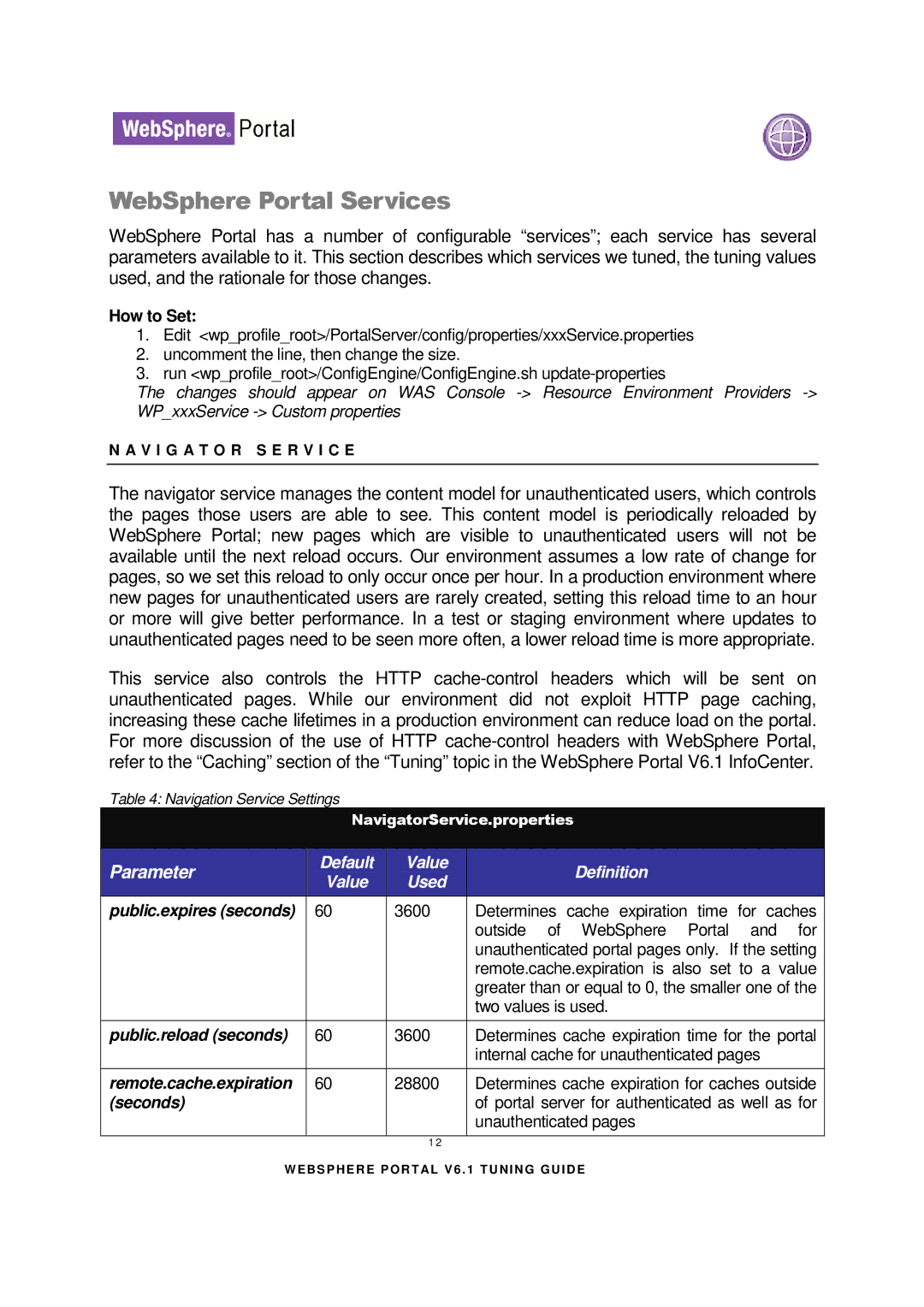
WebSphere Portal Services
WebSphere Portal has a number of configurable “services”; each service has several parameters available to it. This section describes which services we tuned, the tuning values used, and the rationale for those changes.
How to Set:
1.Edit <wp_profile_root>/PortalServer/config/properties/xxxService.properties
2.uncomment the line, then change the size.
3.run <wp_profile_root>/ConfigEngine/ConfigEngine.sh
The changes should appear on WAS Console
N A V I G A T O R S E R V I C E
The navigator service manages the content model for unauthenticated users, which controls the pages those users are able to see. This content model is periodically reloaded by WebSphere Portal; new pages which are visible to unauthenticated users will not be available until the next reload occurs. Our environment assumes a low rate of change for pages, so we set this reload to only occur once per hour. In a production environment where new pages for unauthenticated users are rarely created, setting this reload time to an hour or more will give better performance. In a test or staging environment where updates to unauthenticated pages need to be seen more often, a lower reload time is more appropriate.
This service also controls the HTTP
Table 4: Navigation Service Settings
NavigatorService.properties
Parameter | Default | Value | Definition | |
Value | Used | |||
|
| |||
|
|
|
| |
public.expires (seconds) | 60 | 3600 | Determines cache expiration time for caches | |
|
|
| outside of WebSphere Portal and for | |
|
|
| unauthenticated portal pages only. If the setting | |
|
|
| remote.cache.expiration is also set to a value | |
|
|
| greater than or equal to 0, the smaller one of the | |
|
|
| two values is used. | |
|
|
|
| |
public.reload (seconds) | 60 | 3600 | Determines cache expiration time for the portal | |
|
|
| internal cache for unauthenticated pages | |
|
|
|
| |
remote.cache.expiration | 60 | 28800 | Determines cache expiration for caches outside | |
(seconds) |
|
| of portal server for authenticated as well as for | |
|
|
| unauthenticated pages | |
|
|
|
| |
|
| 1 2 |
| |
W E BS P HE R E P O R T AL V 6 . 1 T U N I N G G U I D E | ||||
